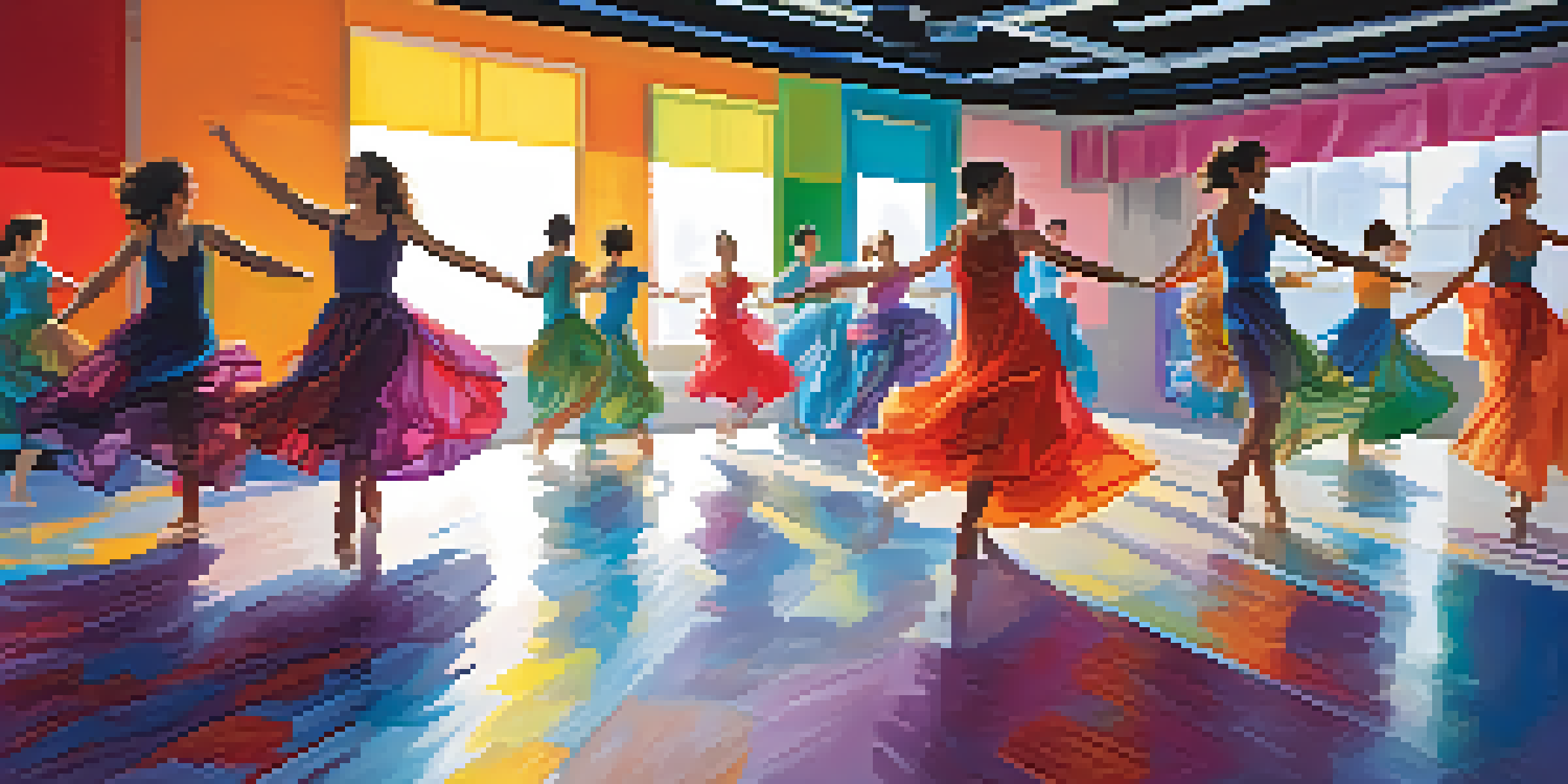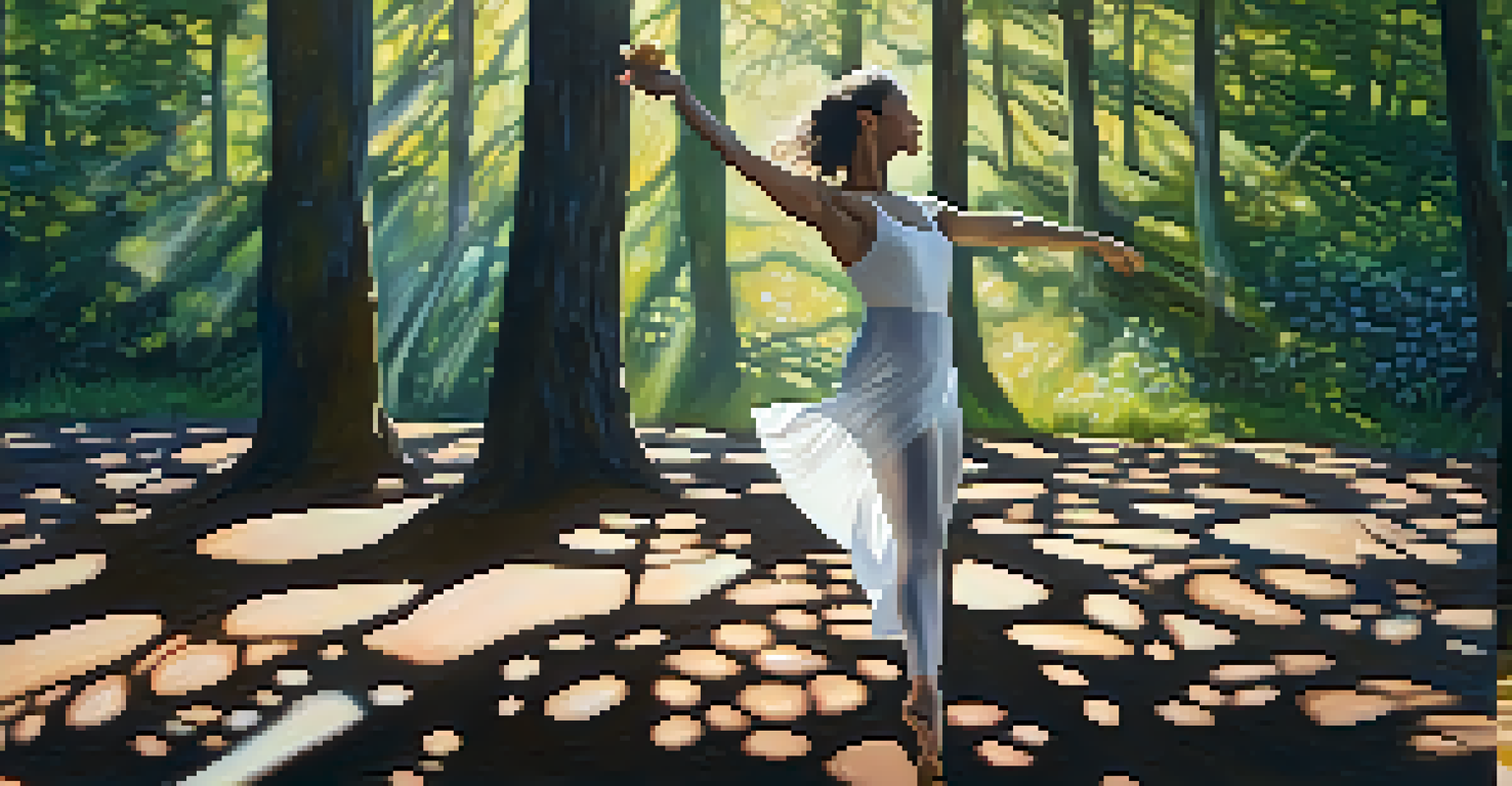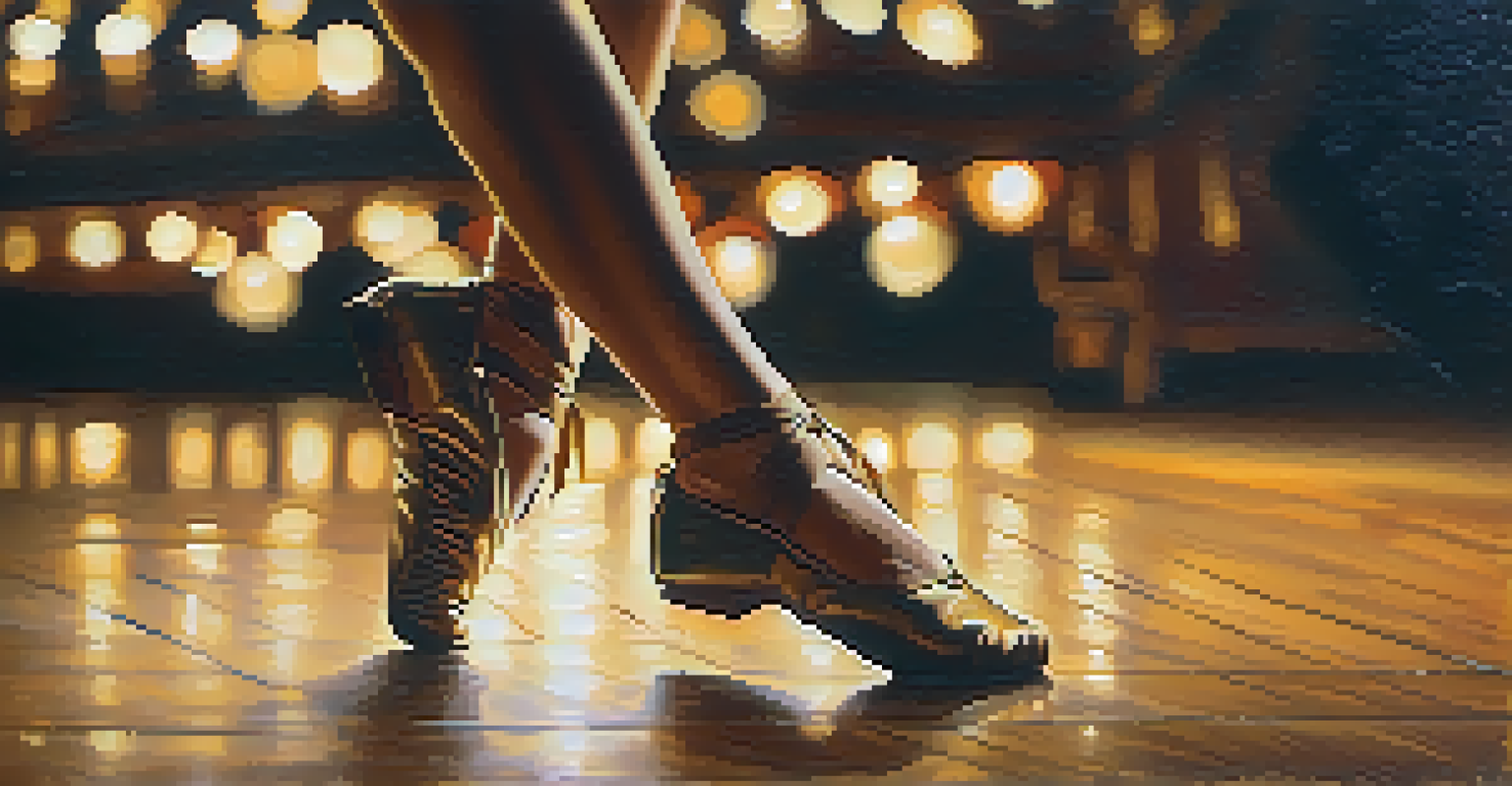Experimental Approaches to Dance: Beyond Traditional Techniques

Understanding Experimental Dance and Its Importance
Experimental dance serves as a vibrant canvas for creativity, pushing the boundaries of traditional movement. Unlike classical forms, which often adhere to specific techniques, experimental dance invites artists to explore new expressions. This approach encourages dancers to break free from conventional norms and discover their unique voice within the art form.
Dance is the hidden language of the soul.
By delving into experimental dance, performers can engage with diverse influences, such as visual arts, theater, and even technology. This fusion of disciplines creates a rich tapestry of movement that captivates audiences and inspires fellow artists. It’s a space where innovation thrives and the unexpected becomes the norm.
Ultimately, embracing experimental dance fosters a dynamic artistic community. Dancers can collaborate without restrictions, share ideas, and evolve their craft collectively. This sense of community not only enriches individual performances but also contributes to the evolution of dance as a whole.
The Role of Improvisation in Experimental Dance
Improvisation stands at the heart of many experimental dance forms, serving as a tool for spontaneity and self-expression. In these settings, dancers often rely on their instincts, allowing the body to respond organically to music, space, and even emotion. This process can lead to surprising movements and connections that might never emerge in a structured rehearsal.

Consider the example of a dancer who steps onto the stage without a predetermined plan. Instead of following a set choreography, they let the rhythm guide them, creating a unique performance each time. This unpredictability not only excites the performer but also engages the audience, who can sense the raw authenticity unfolding before them.
Embracing Creativity in Dance
Experimental dance encourages artists to explore new expressions and break free from traditional movement norms.
Moreover, improvisation cultivates adaptability and enhances a dancer's ability to respond to various stimuli. As dancers practice improvisational techniques, they become more attuned to their surroundings, leading to richer and more interactive performances. This adaptability is essential, especially in an era when collaboration and audience engagement are increasingly valued.
Incorporating Technology into Dance Practices
The integration of technology in dance has opened up a myriad of experimental possibilities. From motion capture to projection mapping, dancers can now explore new dimensions of their craft. This merging of dance and technology not only enhances visual storytelling but also creates immersive experiences for the audience.
Art is not freedom from discipline, but disciplined freedom.
For instance, a performance might feature dancers interacting with projected images that respond to their movements in real-time. This interaction creates a dialogue between the dancer and digital space, allowing for a dynamic exchange that emphasizes the fluidity of both art forms. Such innovative approaches captivate audiences and challenge their perceptions of dance.
As technology continues to evolve, so too does the potential for creative exploration within dance. Dancers who embrace these tools can push the boundaries of what movement can convey, ultimately enriching their artistic expression. This evolving landscape encourages artists to think outside the box and redefine the possibilities of their performances.
Exploring Cross-Disciplinary Collaborations
Cross-disciplinary collaborations have become a hallmark of experimental dance, merging different art forms to create unique experiences. By working alongside musicians, visual artists, or even scientists, dancers can infuse their work with diverse perspectives and techniques. This blending of disciplines not only enhances creativity but also broadens the audience's understanding of dance.
Take, for example, a project that combines dance and visual art. Dancers might perform in front of a live painting, with each stroke of the brush influencing their movements. This collaboration allows both artists to feed off each other’s energy, resulting in a performance that feels alive and interconnected.
The Power of Improvisation
Improvisation in experimental dance fosters spontaneity and adaptability, allowing performers to engage deeply with their environment.
These collaborative efforts also encourage dancers to step outside their comfort zones. By engaging with artists from various backgrounds, they can learn new skills and approaches that enhance their own practice. This spirit of experimentation fosters a culture of innovation that benefits the entire artistic community.
The Influence of Cultural Diversity on Dance Innovation
Cultural diversity plays a vital role in shaping experimental dance, offering a wealth of influences and traditions to draw from. As artists share their backgrounds and experiences, they introduce unique movement styles and narratives that enrich the dance landscape. This exchange of ideas fosters an environment of creativity and innovation.
For instance, a dancer trained in traditional African dance might incorporate rhythmic footwork and storytelling elements into a contemporary piece, creating a fresh perspective. This blending of styles not only showcases the dancer's heritage but also invites audiences to explore new narratives and emotional depths.
Embracing cultural diversity in dance also promotes inclusivity and understanding. As various traditions and practices come together, performers and audiences alike gain a greater appreciation for the art form. This celebration of diversity ultimately leads to richer performances that resonate on a deeper level.
Challenging Norms: Themes in Experimental Dance
Experimental dance often tackles challenging themes, pushing societal boundaries and inviting introspection. Dancers may explore topics such as identity, politics, or environmental issues, using their bodies as vehicles for expression. This thematic exploration allows for a deeper connection with the audience, provoking thought and conversation.
For example, a performance addressing climate change might use stark movements and visual elements to convey urgency and despair. Through these artistic choices, the dancers create a powerful narrative that resonates with viewers, encouraging them to reflect on their role in the world. This ability to provoke thought is one of the hallmarks of experimental dance.
Cross-Disciplinary Collaborations
Collaborating with artists from various disciplines enriches experimental dance, broadening its creative scope and audience impact.
By addressing complex themes, experimental dance not only entertains but also educates. It challenges audiences to consider perspectives they may not have encountered before, fostering empathy and understanding. This commitment to social commentary highlights the transformative power of dance as an art form.
The Future of Experimental Dance: Trends and Predictions
As we look to the future, experimental dance continues to evolve, driven by technological advancements and cultural shifts. Emerging trends indicate a growing focus on sustainability and eco-conscious practices within the dance community. Artists are beginning to incorporate eco-friendly materials and practices into their performances, reflecting a broader societal commitment to environmental responsibility.
Additionally, the rise of virtual reality and online platforms is changing how dance is produced and consumed. Dancers can now reach global audiences without the constraints of traditional venues, opening up new possibilities for collaboration and experimentation. This shift has the potential to democratize dance, making it more accessible to diverse audiences.

Ultimately, the future of experimental dance looks bright, with endless opportunities for innovation and exploration. As artists continue to challenge norms and embrace new technologies, the dance landscape will undoubtedly expand, offering fresh and exciting experiences for both performers and audiences alike.